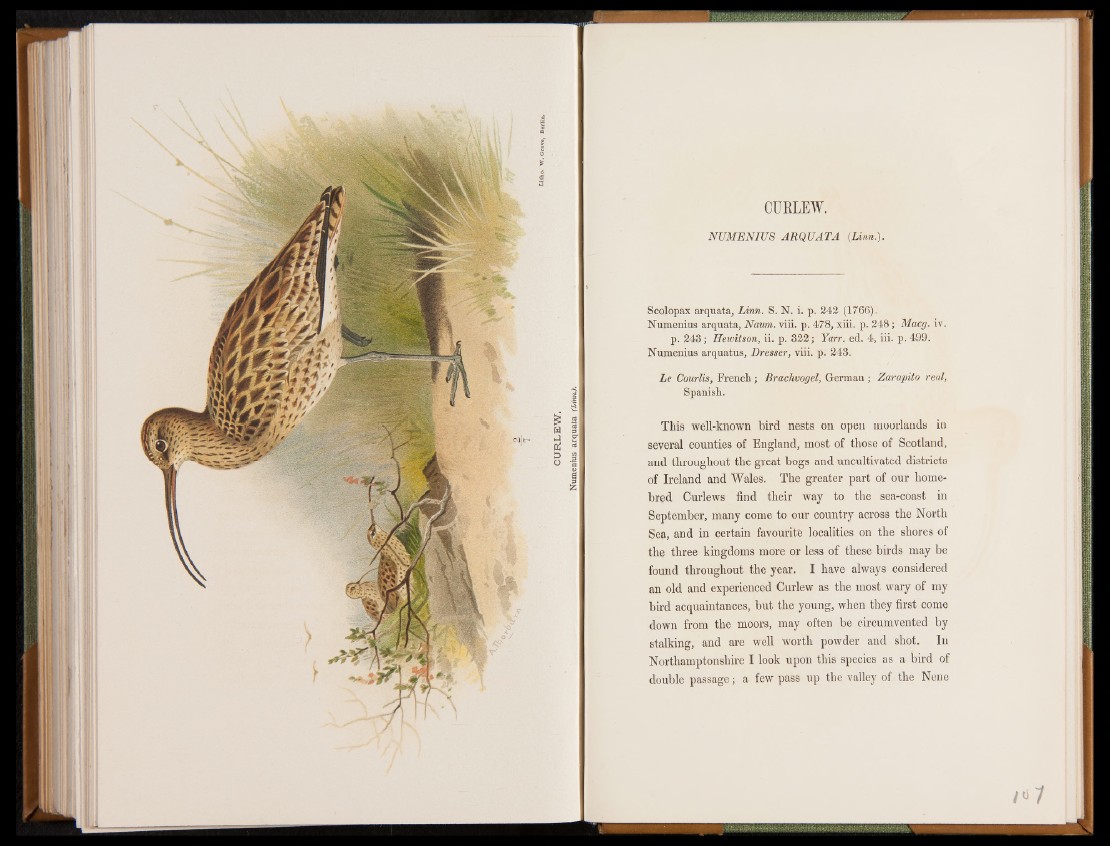
CURLEW.
NUMENIUS ARQUATA (Linn.).
Scolopax arquata, Linn. S. N. i. p. 242 (1766).
Numenius arquata, Naum. viii. p. 478, xiii. p. 248; Macg. iv.
p. 243; Hewitson, ii. p. 322; Yarr. ed. 4, iii. p. 499.
Numenius arquatus, Dresser, viii. p. 243.
Le Courlis, French; Brachvogel, German ; Zarapito real,
Spanish.
This well-known bird nests on open moorlands in
several counties of England, most of those of Scotland,
and throughout the great bogs and uncultivated districts
of Ireland and Wales. The greater part of our homebred
Curlews find their way to the sea-coast in
September, many come to our country across the North
Sea, and in certain favourit'e localities on the shores of
the three kingdoms more or less of these birds may be
found throughout the year. I have always considered
an old and experienced Curlew as the most wary of my
bird acquaintances, but the young, when they first come
down from the moors, may often be circumvented by
stalking, and are well worth powder and shot. In
Northamptonshire I look upon this species as a bird of
double passage; a few pass up the valley of the Nene